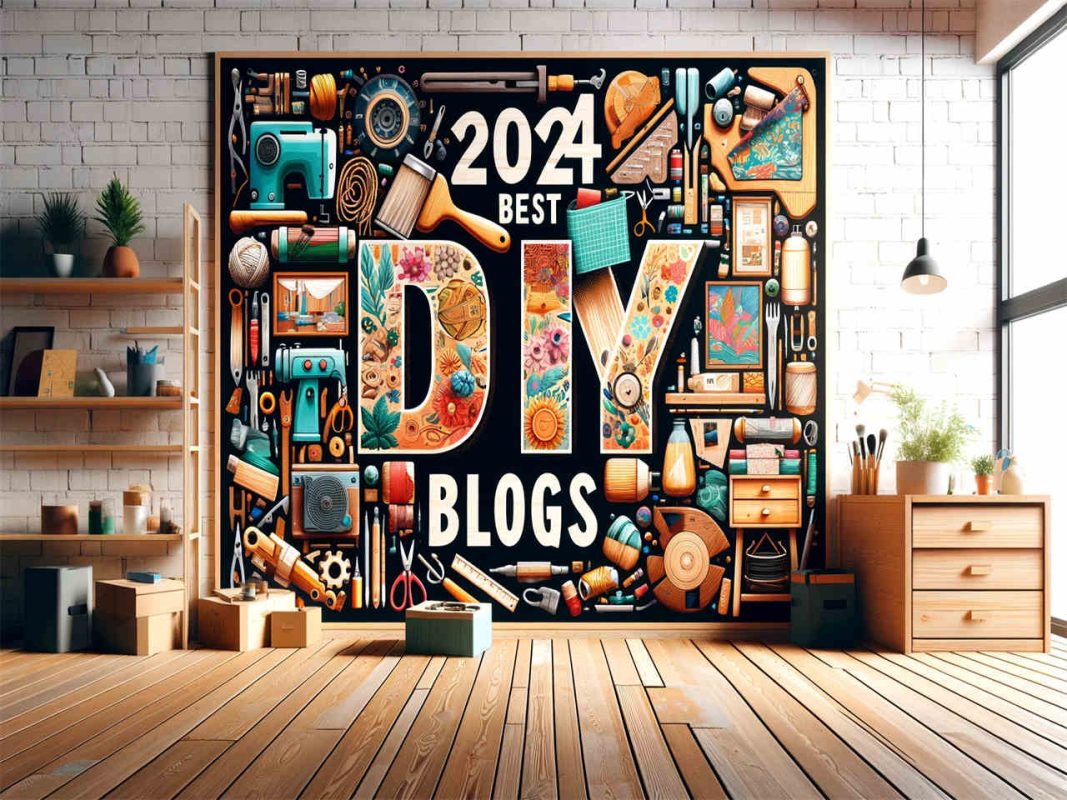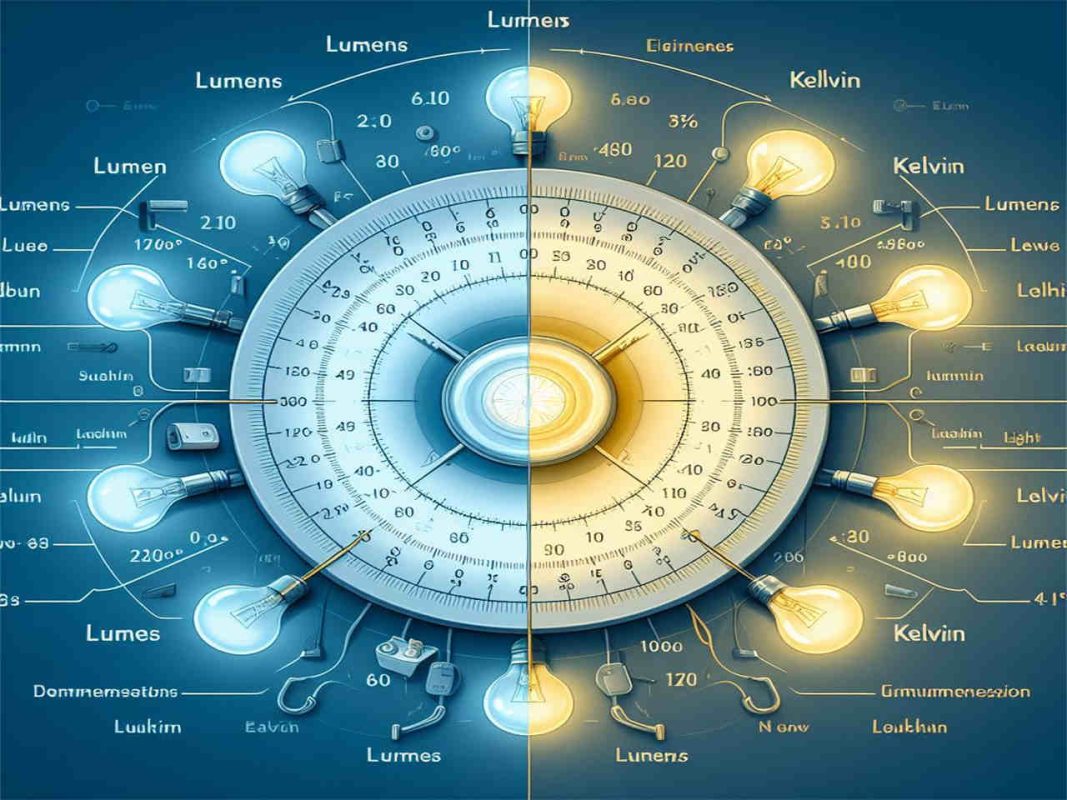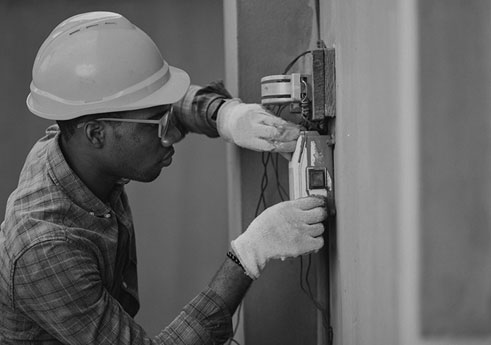Embarking on a career in interior design or just curious about its landscape in the UK? This article is your go-to guide, addressing key questions and challenges in the field. Whether you’re pondering the earning potential, market demand, or the impact of location on your career, we’ve got you covered. Dive into our comprehensive analysis and discover the substantial benefits awaiting in the world of interior design. Get ready to explore detailed insights and statistics that will shape your understanding and strategy in this dynamic industry.
Is interior design a good career and make good money in the UK? How much does an interior designer earn/get paid/make in the UK?
Here’s a table summarizing the key points about the career and financial prospects of interior design in the UK:
| Aspect | Details |
|---|---|
| Overall Career Prospects | Rewarding in terms of job satisfaction and financial returns. |
| Average Salary (2024) | Approx. £26,354/year (Range: £20,000 – £39,000) according to PayScale. |
| Salary by Experience | – Entry-level: £25,500 – £54,500/year. |
| – Experienced: Avg. £38,200/year. | |
| Location-Based Salary | – London: Avg. £40,625 – £41,221.65. |
| – Liverpool: Avg. £41,600. | |
| – Reading: Avg. £44,658.36. | |
| – Leeds: Avg. £25,442.31. | |
| – Newcastle upon Tyne: Avg. £29,616. | |
| Specialized Roles | – Interior Design Assistant: £23,096/year. |
| – Residential Interior Designer: £35,688/year. | |
| – Technical Interior Designer: £40,055/year. | |
| – Kitchen Interior Designer: £28,369/year. | |
| – Senior Interior Designer: £44,209/year. | |
| Freelance vs Employed | Freelancers have potentially higher income but more variability. Employed designers have steadier income. |
| Career Growth Opportunities | Opportunities to progress to higher roles like Senior Designer, Project Manager, or Design Director. |
| Strategies for Increasing Salary | Skill updating, networking, professional accreditation, strong digital presence. |
| Conclusion | A range of financial prospects based on location, experience, and specific industry path. |
Interior design can be a rewarding career in the UK, both in terms of job satisfaction and financial returns. The salary for interior designers in the UK varies depending on experience, location, and the type of employment (freelance or with a firm).
- Average Salary: The average salary for an interior designer in the UK in 2024 is approximately £26,354 per year, with a range from £20,000 to £39,000, as reported by PayScale.
- Salary Range Based on Experience:
- Entry-level positions typically offer between £25,500 and £54,500 per year.
- Experienced interior designers can expect an average salary of around £38,200 per year.
- Location-Based Variations: Salaries can vary significantly based on location. For instance:
- London typically offers higher salaries, with an average of £40,625 to £41,221.65.
- Other cities like Liverpool and Reading also offer competitive salaries, averaging around £41,600 and £44,658.36, respectively.
- In contrast, cities like Leeds and Newcastle upon Tyne have lower average salaries, around £25,442.31 and £29,616 respectively.
- Specialized Roles and Their Salaries: There are various specialized roles within interior design, each with its own average salary. For example:
- Interior Design Assistant: £23,096 per year.
- Residential Interior Designer: £35,688 per year.
- Technical Interior Designer: £40,055 per year.
- Kitchen Interior Designer: £28,369 per year.
- Senior Interior Designer: £44,209 per year.
- Freelance vs Employed: Freelancers or self-employed designers may have higher income potential for high-profile projects but with more variability, whereas employed designers typically enjoy a more steady income and less administrative burden.
- Career Growth Opportunities: As interior designers gain experience, they can progress to roles like Senior Designer, Project Manager, or Design Director, which come with significantly higher earnings.
- Strategies for Increasing Salary: Continuous skill updating, networking, professional accreditation, and cultivating a strong digital presence are key strategies for boosting income potential in this field.
Overall, interior design in the UK offers a range of financial prospects depending on various factors, including location, experience, and the specific path within the industry one chooses to pursue.
Source: payscale, hollywoodmirrors, checkasalary, theinteriordesigninstitute
How much do interior designers earn in the UK in different identiry
To organize the information you provided into a clear and concise format, I’ll create a table that summarizes the key points. The table will cover the different aspects of interior designer earnings and charges in the UK, including various types of designers and their respective salary ranges or fees.
| Category | Details |
|---|---|
| Commercial Interior Designer Charges | |
| Hourly Rates | Up to £200, £300 in London |
| Percentage-Based Fees | 10-15% of final bill |
| Flat Fee Pricing | Varies based on level of service |
| Types of Services and Costs | |
| Basic Interior Design Services | ~£5,000 |
| Design Plus Documents | £5,000 – £20,000 |
| End-to-End Project Management | Starts at ~£20,000 |
| Design Only Package | £5,000 – £20,000 (Design fee: £500 – £2,000) |
| Interior Designer Salaries in the UK | |
| Entry-Level Interior Designers | £25,500 – £54,500 annually |
| Average Salary | ~£26,354 (Range: £20,000 – £39,000) |
| Experienced Interior Designers | ~£38,200 annually |
| Specialized Roles | Varies (e.g., Technical Designer: ~£40,055, Kitchen Designer: ~£28,369) |
| Top-Paying Locations | London average: ~£55,000 |
| Senior Positions | £40,000 – £50,000 |
| Entry Level Interior Designers in London | ~£22,327 annually |
| Junior Interior Designers in London | £21,418 – £29,705 annually (varies by source) |
| Graduate Interior Designers in the UK | ~£20,625 – £25,232 annually (based on experience) |
| Top Interior Designers Annual Earnings | Varies based on specialization (e.g., Residential: $53,500 – $70,000, Commercial: $51,844 – $88,589, Sustainable: ~$72,016+) |
| Restaurant Interior Designer Charges UK/Ireland | Hourly Rates: Up to £200-£300, Percentage-Based Fees: 10-15%, Flat Fee Pricing: Varies |
| Hospitality Interior Designer Charges UK/Ireland | Hourly Rates: £40-£250, Fixed Fees: From £500, Percentage of Project Cost: 5-10%, Flat Fee Packages: From £395 |
| Cost for Cheap Interior Design Services UK | Hourly Rates: £80-£120, Fixed Fees: £500-£1,000, Percentage of Project Cost: 5-10%, Flat Fee Packages: From £395 |
| Interior Designers at IKEA UK | £19,962 – £41,591 annually (Average: ~£27,413) |
How much do commercial interior designers charge UK
In the UK, the cost of hiring a commercial interior designer varies significantly based on the scope of the project, the designer’s experience, and the location. The pricing structures commonly used by interior designers include hourly rates, percentage-based fees, and flat fee pricing.
- Hourly Rates: The hourly rate for interior designers can range up to £200, depending on the region of the UK, with those based in London charging up to £300 per hour for an initial consultation. Source: housedesigner
- Percentage-Based Fees: This method involves adding a set surcharge to the cost of finishes or furniture selected by the designer. The percentage added usually ranges between 10-15% of the final bill. However, the final fee can be difficult to predict until all purchases are made. Source: housedesigner
- Flat Fee Pricing: This is a more transparent pricing model where the homeowner knows the final price and deliverables prior to starting the project. The flat fee pricing varies based on the level of service provided and can be offered in different tiers or packages. Source: housedesigner
For specific types of services, the costs can vary as follows:
- Basic Interior Design Services: These typically cover design concepts, placement of furniture, and a list of furniture options, averaging around £5,000, including a consultation. Source: checkatrade
- Design Plus Documents: This level includes a detailed furniture plan, lighting options, and drawings of the finished project, with prices ranging between £5,000 and £20,000 on average. checkatrade
- End-to-End Project Management: The most comprehensive service, which includes item supply and installation, starts at around £20,000. This service involves the interior designer managing all aspects of the project, including coordinating tradespeople and purchasing. Source: checkatrade
Additionally, for a “Design Only” package, where the designer provides more input but leaves room for self-expression, the project cost typically ranges from £5,000 to £20,000, with the designer’s fee being between £500 and £2,000 depending on their involvement. Source: tradesmencosts
It’s important to note that the type and number of rooms being designed can also affect the overall cost, with kitchens and bathrooms often being more expensive due to the complexity and fixtures involved. Source: tradesmencosts
In summary, the cost of commercial interior design in the UK depends on several factors, including the designer’s fee structure, the level of service required, and the specifics of the project. It’s advisable to discuss your needs and budget with potential designers to get a more accurate estimate tailored to your project.
How much do famous interior designers make uk
The salary of interior designers in the UK varies widely based on factors such as experience, location, and specialization. Here’s a summary of the salary range and average earnings:
- Entry-Level Interior Designers: Newly qualified interior designers can expect to earn between £25,500 and £54,500 annually. The exact figure depends on their portfolio, education, and job location.
- Average Salary: The average salary for interior designers in the UK is reported to be around £26,354, with the range typically falling between £20,000 and £39,000. Another source lists an average salary of £37,347. This discrepancy highlights the variability in the field depending on various factors.
- Experienced Interior Designers: Those with more experience in the field can see their salaries increase. The average for experienced interior designers is approximately £38,200 per year, but this can vary based on reputation, client base, and the size of projects undertaken.
- Specialized Roles: Specialization in certain areas of interior design can influence salary levels. For instance, a technical interior designer can earn around £40,055 per year, while a kitchen interior designer might earn about £28,369 annually.
- Top-Paying Locations: Geographical location plays a significant role in salary determination. Interior designers in metropolitan areas like London tend to earn more than those in smaller cities or rural areas. For example, interior designer salaries in the City of London average around £55,000.
- Senior Positions: Advanced career roles such as Senior Designer or Design Director command higher salaries. For instance, a Senior Interior Designer could earn between £40,000 and £50,000.
- Freelancing vs. Employment: The choice between freelancing and working for a firm can also impact earnings, with different sets of responsibilities and potential income levels.
Overall, the interior design industry in the UK offers a wide range of salary possibilities, influenced by experience, location, specialization, and the type of employment. Continuous professional development, building a strong portfolio, and networking are key strategies for increasing earning potential in this field.
Source: minimalistfocus, talent, reed, hollywoodmirrors, checkasalary, payscale,
How much do entry level interior designers make in London?
In London, as of 2024, an entry-level interior designer can expect to earn an average total compensation of around £22,327 per year. This figure includes various forms of pay, such as tips, bonuses, and overtime. For those with a little more experience, specifically 1-4 years, the average total compensation increases to approximately £27,143 per year. It’s important to note that these figures can vary based on specific circumstances and additional skills. Source: payscale
How much do junior interior designers make in London?
As of 2024, the salary for junior interior designers in London varies across different sources, but they provide a consistent range and average figures:
- According to Payscale, the average base salary for a Junior Interior Designer in the United Kingdom is approximately £21,418 per year. This figure represents a median value, with the lower end at about £18,000 and the upper end around £25,000.
- Another source, Talent.com, reports a median salary of £24,500 for Junior Interior Designers in the UK. Their data suggests a lower range starting at £22,500 and extending up to £32,000 at the higher end.
- In contrast, Payscale’s data for interior designers in London (not specifically junior level) shows an average salary of about £29,705 per year. This broader category includes more experienced professionals, with the salary range stretching from £22,000 to £45,000.
These figures indicate that while junior interior designers start on the lower end of the pay scale, there is potential for growth with experience in the field. It’s important to note that salaries can vary based on factors like specific employer, additional skills, and the exact location within London.
How much do graduate interior designers make in the UK?
As of 2024, the salary range for graduate interior designers in the United Kingdom varies. An entry-level interior designer can expect to earn an average total compensation of approximately £20,625. This figure can rise with experience, with early career designers (1-4 years of experience) earning an average total compensation of around £25,232. For more detailed and updated salary information, you can refer to PayScale’s website.
How much do top interior designers make a year?
Top interior designers’ salaries can vary significantly based on factors such as location, industry sector, and level of education or certification. In the United States, the average annual salary for an interior designer is approximately $66,708. This number can fluctuate based on the state and cost of living. For those specializing in luxury residential design, salaries typically range between $53,500 and $70,000 annually. Commercial design specialists can expect to earn between $51,844 and $88,589 per year. Sustainable design is a growing field, with salaries ranging from around $72,016 to over $100,000 annually.
Interior designers with professional certifications, like the NCIDQ, often earn about $16,000 more per year than those without such qualifications. Freelance interior designers have the potential to earn more than full-time employees, with hourly rates varying from $50 to $200 and project-based fees averaging $5 to $17 per square foot.
Education plays a critical role in salary potential. Those with a bachelor’s degree in interior design can expect starting salaries ranging from $68,000 to $102,000 annually. Continuously updating skills through education, networking, and maintaining a strong portfolio are key strategies for maximizing earning potential in this field.
Source: interiordesignedu
How much do restaurant interior designers charge uk Ireland?
Restaurant interior designers in the UK and Ireland offer various pricing structures for their services, including hourly rates, percentage-based fees, and flat fee pricing.
- Hourly Rates: Interior designers often charge hourly rates, which can vary significantly depending on location and designer expertise. In the UK, hourly fees can range up to £200, and in London, it’s not uncommon for designers to charge up to £300 for an initial consultation.
- Percentage-Based Fees: Another common approach is to charge a percentage of the total cost of the finishes or furniture chosen for the project. This percentage typically ranges from 10-15% of the final bill. However, this approach can make it difficult to gauge the final fee until all furniture pieces are purchased.
- Flat Fee Pricing: This method offers more transparency, as clients know the final price and deliverables before starting the project. Designers may offer different levels of fixed fee pricing based on the scope and requirements of the project.
For more comprehensive projects, designers might take complete control, managing everything from sourcing builders and decorators to purchasing furniture and providing a 3D virtual walkthrough of the final design. The complexity and size of your project, including the number and type of rooms involved, will significantly impact the overall cost.
The choice between hourly rates, percentage-based fees, and flat fee pricing depends on various factors, such as the project’s location, scope, size, timescale, and type. Additionally, designers may charge a markup or commission on furniture purchases and sourcing building and decorating contractors.
It’s important to note that while high-end interior designers might offer more experience and access to better materials, their services are generally more expensive and often charged by the hour. In contrast, budget interior designers can provide more affordable options, though they may be more suitable for smaller projects.
For detailed information on pricing and packages, it’s advisable to directly consult with interior designers or firms in your specific area to get a more accurate and personalized quote based on your specific needs.
Sources:
How much do hospitality interior designers charge UK Ireland?
The cost of hiring a hospitality interior designer in the UK varies based on several factors, including the designer’s experience, the project’s scope, and the location. Here’s a summary of the pricing models and ranges you can expect:
- Hourly Rates: This is a common pricing model for interior designers. The rates can vary significantly based on the designer’s experience and location. For example, a junior designer might charge £40-£60 per hour, while a senior designer could charge £150-£250 per hour. The average rate is generally around £80-£120 per hour, excluding VAT.
- Fixed Fees: Some designers offer fixed fees for specific services or projects. For smaller projects, like a room redesign, the fee could range from £500-£1,000. For larger and more comprehensive projects, the costs can be significantly higher. A complete package, which includes planning, managing, and purchasing for the entire project, can start at a minimum of £20,000, with designer costs of at least £2,000.
- Percentage of Overall Project Cost: Another method is charging a percentage of the total project cost, typically between 5-10%. This model might lead to concerns about designers potentially encouraging higher spending.
- Flat Fee Packages: Some designers and design firms offer transparent flat fee packages. For instance, a complete bedroom redesign could start from around £395.
It’s important to note that these rates can also depend on the project’s location, with costs typically being higher in London and the South East compared to other regions. Additionally, many designers will add a mark-up or commission on the cost of furniture and materials.
Before choosing a designer, it’s advisable to consider not just the cost but also their portfolio, experience, and the specific services they offer to ensure they meet your project’s needs.
Source: tradesmencosts, mybespokeroom
How much does a cheap interior designer cost uk
The cost of hiring an interior designer in the UK can vary significantly based on several factors, including the designer’s experience, the project’s complexity, and location. Generally, there are different methods by which interior designers charge for their services.
- Hourly Rates: The average hourly rate for an interior designer in the UK ranges from £80-£120, as reported by the Society of British and International Design (SBID). However, rates can vary widely. For instance, a junior designer might charge around £40-£60 per hour, whereas a senior designer with extensive experience could charge between £150-£250 per hour.
- Fixed Fees: Some interior designers offer fixed fees for certain types of projects. For a room redesign, fees could range from £500-£1,000, which would cover selecting furniture, decor, and color schemes. Larger projects, such as designing an entire home or office, might have a fee proposal outlining different project stages, with either a fixed fee for the whole project or a schedule of fees for each stage.
- Percentage of Overall Project Cost: Another common pricing model is charging a percentage of the total project cost, typically ranging between 5-10%. This method, however, might lead to concerns about the potential for designers to encourage higher spending.
- Flat Fee Packages: Some companies offer transparent, flat-fee packages for specific services. For example, a complete bedroom redesign might start from around £395.
- Online Interior Design Services: Online interior design is an emerging trend offering more affordable options. It involves collaborating with a designer remotely, and packages might include video calls, annotated floorplans, mood boards, and shopping lists, potentially starting at lower price points compared to traditional services.
Remember that additional costs might arise for materials, furniture, or decor items selected by the designer. Also, designers based in major cities or those involving high-end materials or custom furniture might charge higher fees.
In conclusion, the cost of hiring an interior designer in the UK can greatly vary depending on the scope of your project and the designer’s pricing method. It’s crucial to discuss all potential costs and pricing structures with your designer to ensure clarity and alignment with your budget and expectations.
How much do interior designers make at IKEA UK?
Interior designers at IKEA in the UK can expect a salary range from approximately £19,962 to £41,591 per year. The average salary for IKEA employees in the UK is around £27,413 annually. This data is based on salary reports and market research from sources like PayScale and Glassdoor. The salaries can vary based on experience, location, and other factors. For more detailed and updated salary information, it’s advisable to refer to websites like PayScale and Glassdoor.
How much do interior designers earn in the UK in different duration?
Here’s a table summarizing the information you provided about the earnings of interior designers in the UK:
| Aspect | Details |
|---|---|
| Hourly Rate | £25 – £150 (varies based on experience, location, and project complexity) |
| Average Annual Salary | £26,354 – £38,626 (varies by source; PayScale reports £26,354, others report up to £38,626) |
| Annual Salary Range | £20,000 – £39,000 (according to PayScale), up to £55,000 in specific locations like City of London |
| Location Variations in Salary | Higher in Southwest London and London (average: £42,148 – £40,625), slightly lower in Manchester, Birmingham, Nottingham (average: £35,667 – £36,355) |
| Types of Interior Design Jobs | Interior Design Assistant, Residential Interior Designer, Technical Interior Designer, etc., with average salaries ranging from £23,096 to £40,055 per year |
| Senior Positions | Senior Interior Designers often earn £42,000 – £50,000, depending on company and location |
| Average Weekly Salary (2024) | Approx. £735 (based on average annual salary of £38,200) |
| Salary Variations | Entry-level: £25,500 – £54,500 per year; more experienced designers earn higher salaries. Region-specific variations are also significant. |
| Additional Earnings | Bonuses, profit sharing, and commission can increase total pay, ranging from £20,000 to £43,000 annually |
| Specialized Roles | Senior Interior Designer (~£44,209/year), Technical Interior Designer, Kitchen Interior Designer, etc., with different salary ranges based on expertise and responsibilities |
| Note | Salaries are subject to change based on market trends, economic factors, and industry standards. Consult industry resources for current information. |
How much do interior designers charge/make per hour UK?
The hourly rate for interior designers in the UK varies based on experience and location. A general range is between £25 and £150 per hour. This range reflects factors such as the designer’s expertise, the complexity of the project, and the geographical location within the UK. For instance, interior designers in larger cities like London may charge towards the higher end of this scale due to higher living costs and demand for services in these areas. Source: mybespokeroom
Regarding salaries, the average annual salary for an interior designer in the UK is approximately £26,354. However, this figure can vary significantly. The salary range typically spans from around £20,000 to £39,000 per year. Bonuses, profit sharing, and commission can also contribute to the total pay, which can range from £20,000 to £43,000 annually. Source: payscale
Different types of interior design roles offer varying salaries. For example, an interior design assistant can earn around £23,096 per year, while a senior interior designer might earn approximately £44,209 per year. Other specialized roles, like a technical interior designer or a kitchen interior designer, have different salary ranges, generally depending on their specific expertise and responsibilities within the field. Source: hollywoodmirrors
It’s also important to note that these figures are subject to change based on the latest market trends, economic factors, and evolving industry standards. For the most current and detailed information, consulting industry-specific resources or conducting a more personalized salary survey might be beneficial.
How much money do interior designers make a year UK?
The salary of interior designers in the UK varies based on experience, location, and type of employment. As of 2024, here’s a summary of the salary range and average:
- Average Salary: The average salary for interior designers in the UK ranges from around £26,354 to £38,626 per year. This average can vary significantly depending on the source and the specific data considered. For instance, PayScale reports an average salary of £26,354, while other sources like Indeed mention a higher average of around £38,626.
- Salary Range: The salary range for interior designers also varies. For example, PayScale indicates a range from £20,000 to £39,000, while other sources report higher ranges, possibly up to £55,000 in specific locations like City of London.
- Location Variation: Salary can also vary significantly by location. In areas like Southwest London and London, the average salaries reported are higher, around £42,148 and £40,625 respectively. Other cities like Manchester, Birmingham, and Nottingham show slightly lower averages, ranging from £35,667 to £36,355.
- Types of Interior Design Jobs: Different roles within interior design come with different salary expectations. For example, roles like Interior Design Assistant, Residential Interior Designer, and Technical Interior Designer have average salaries ranging from £23,096 to £40,055 per year.
- Senior Positions: More senior positions in interior design, such as Senior Interior Designers, command higher salaries, often ranging from £42,000 to £50,000, depending on the company and location.
These figures provide a general idea of what interior designers can expect to earn in the UK. However, individual salaries can vary based on factors like experience, specialization, the scale of projects, and the designer’s reputation in the industry.
Sources: PayScale, Hollywood Mirrors, Talent.com, The Interior Design Institute, Reed.co.uk.
How much do interior designers make a week in the UK?
Based on the information gathered from various sources, the average salary for interior designers in the United Kingdom varies. In 2024, the average annual salary for interior designers is reported to be approximately £38,200. However, the salary can vary based on experience, location, and the size of the company.
For more specific weekly figures, if we consider the average annual salary of £38,200 and divide it by the number of weeks in a year (52), the average weekly salary for an interior designer in the UK would be about £735.
It’s important to note that this is an average figure and actual salaries can vary. Entry-level interior designers might earn less, typically starting between £25,500 and £54,500 per year, while more experienced designers can expect higher salaries. Additionally, the salary can also vary significantly based on the region within the UK, with some areas offering higher average salaries than others.
For more detailed and region-specific information, you can refer to the sources I consulted: uk.talent.com and checkasalary.co.uk.
How much and what do interior designers charge or cost in the UK?
Interior designers in the UK have various pricing models, and the cost can vary significantly based on the scope of the project, the designer’s experience, and the location. Here’s a summary of what you can expect regarding interior designer costs in the UK:
- Hourly Rates: The hourly rate for interior designers in the UK can range significantly. A junior designer with less experience may charge around £40-£60 per hour, while a senior designer with over ten years of experience might charge between £150-£250 per hour. In London, some designers might even charge up to £300 per hour for an initial consultation. The average hourly rate across the UK, as reported by the Society of British and International Design, is around £80-£120 per hour, excluding VAT.
- Fixed Fees: For specific projects, interior designers might offer a fixed fee. This could be around £500-£1,000 for a single room redesign, but it varies based on the project’s complexity. Larger projects, like the design and decoration of an entire home or office, may have a fixed fee for the overall project or a schedule of fees based on different stages.
- Project-Based Packages: For comprehensive services, such as a “Design, Supply, Fit & Install” package, the costs are higher, typically starting at £20,000, with designer fees beginning at £2,000. This type of package usually includes planning, project management, and purchasing furniture and fittings on your behalf.
- Percentage of Overall Project Cost: Some interior designers charge a percentage of the total project cost, usually between 5-10%. This method can vary depending on the project’s size and scope.
- Flat Fee Packages: Increasingly popular are flat fee, transparent packages for specific requirements like a single room design. These can start from £395 for a complete bedroom redesign, offering a clear understanding of costs upfront.
It’s essential to note that additional costs may arise for materials, furniture, travel expenses, and any specific requirements of the project. Prices can also be higher in London and other major cities compared to smaller towns or rural areas. When choosing an interior designer, it’s crucial to consider their qualifications, experience, portfolio, and the transparency of their pricing structure.
Source: tradesmencosts, mybespokeroom
How much does interior design cost UK for Hotel?
The cost of interior design services for hotels in the UK can vary widely based on several factors, including the size and scope of the project, the experience of the designer, and the location. Here’s a general overview:
- Hourly Rates: Interior designers may charge hourly rates that can range from £50 to £200, with London-based designers potentially charging up to £300 per hour for initial consultations.
- Flat Fee or Fixed Fee: For a complete design project, designers may offer a flat fee pricing model. This is a transparent way of pricing where clients know the final price and deliverables before the project starts. The range for a flat fee can be quite wide, depending on the project’s complexity and scope.
- Percentage-Based Fees: Some designers add a set surcharge (typically 10-15%) to the cost of finishes or furniture they select for a project.
- Cost Per Square Metre: This model is more common for smaller spaces or individual rooms, and combines well with other pricing structures.
- Retail Price Method: Here, the designer’s payment comes from discounts given by retailers, which are not passed on to the client. This method is more common for projects involving significant material purchases from specific retailers.
- Combination Rates: This involves combining two or more of the above methods, often used for larger and more complex projects.
For a full design project, the cost can range from £1,000 to £10,000 or more, depending on various factors. Alternatively, some interior decorators may charge a flat project fee, which can range from £2,000 to £20,000 or more.
It’s important to note that these are general ranges and actual costs can vary. For specific pricing, it’s advisable to consult directly with interior designers or firms to get a more accurate estimate based on your specific needs and location.
These insights are based on information from House Designer, Houzz Pro, and Oladecorator.
What are the statistics of interior designers?
The statistics for interior designers as of 2024 provide a comprehensive view of the industry in terms of employment, salary, and market trends. Here’s a summary of the key points:
- Employment and Openings: There are about 94,900 interior designers employed in 2022, with approximately 9,000 job openings projected each year over the decade.
- Annual Salary Range: Interior designers’ salaries vary significantly based on their experience and the sector they work in. The average annual salary ranges from around $51,914 to $53,370, with starting salaries typically around $24,311 per year and high-end incomes reaching close to $92,504. Specific sectors such as architectural engineering and specialized design services offer average salaries of $60,910 and $54,710 respectively.
- Global and Domestic Market Value: The global interior design market was valued at $150.7 billion in 2020 and is projected to reach $255 billion by 2027. The U.S. market contributed $40.7 billion in 2020.
- Specialized Areas Growth: The hotel interior design services market is expected to reach $7.8 billion by 2027, highlighting the importance of interior design in the hospitality industry.
- Educational Requirements: Most interior designers have a bachelor’s degree, and the duration of study varies from 2 years for an Associate’s degree to 3-4 years for a Bachelor’s degree.
- Gender and Ethnicity in the Profession: The profession is predominantly female, with 72.7% of interior designers being female. It’s also noted for a higher Caucasian representation, with 86% of interior designers being Caucasian.
- Geographical Distribution in the U.S.: California has the highest number of interior designers, with states like Florida and Texas also having significant numbers. The demand for interior designers tends to be higher in urban and high-income areas.
- Hourly Rate and Charging Practices: Interior designers typically charge between $5 and $12 per square foot, and the average hourly rate is approximately $25.66.
These statistics provide a detailed snapshot of the interior design industry, reflecting its diversity, scope, and economic significance.
Source: marketsplash, bls, sensibledigs, foyr
Is interior design in high demand in UK?
Interior design is currently experiencing high demand in the UK. This demand is influenced by several factors, including an increasing awareness among consumers of the value of well-designed and functional interior spaces, leading to more investments in professional interior design services. The trend towards home renovations and creating unique work environments, coupled with the rise in luxury interior design services, also contributes to the demand for interior designers.
The British Industry of Interior Design estimated that there were around 20,000 interior designers practicing in the UK in 2021. However, exact figures are hard to determine due to the absence of a government regulator for the industry. Additionally, the interior design industry was expected to see a growth rate of 3.6% in 2023, with its market size estimated at £1.5 billion. This growth is partially attributed to the aging population and the effects of the COVID-19 pandemic, which have driven demand in sectors like retirement homes, healthcare, and hospitality. The commercial sector is also seeing increased demand as companies adjust to hybrid work environments and reconfigure office spaces.
The high demand for interior designers in the UK is further supported by government initiatives to bolster the creative industries, including design education and training. This approach has opened more opportunities for aspiring interior designers. There is also a noticeable trend in the real estate market, where people prefer renovating homes over moving, increasing the need for interior design services for both residential and office spaces.
In summary, the interior design sector in the UK is thriving, with a broad range of opportunities across various industries, driven by consumer trends, economic factors, and government support for the creative industries.
Source: homedesigninstitute, biid, houzz
How popular is interior design in UK?
Interior design is a significant and growing sector in the United Kingdom. As of 2023, the market size of the interior design industry in the UK is estimated to be £1.5 billion. This indicates a robust and sustained interest in interior design within the country. Additionally, the design economy as a whole has been expanding at a rapid pace, contributing £97.4 billion in Gross Value Added (GVA) to the UK economy. This growth is double the average growth rate of the UK economy, highlighting the increasing importance of design industries, including interior design.
Furthermore, the interior design sector has experienced a growth rate of 3.6% in 2023 alone, with an annualized market size growth of 1% from 2018 to 2023. This steady growth is a testament to the enduring popularity and demand for interior design services in the UK. The sector also plays a crucial role in employment, with 1.97 million people employed in design roles across various industries in 2020, of which 77% work in non-design sectors such as retail, finance, and construction.
These statistics reveal not only the economic impact of interior design in the UK but also its widespread integration into various sectors, underscoring its relevance and appeal in the contemporary market.
Source: hollywoodmirrors, baid
How many interior designers in the UK
As of May 2021, the British Institute of Interior Design (BIID) estimated that there were approximately 20,000 interior designers actively practicing in the UK. This figure was derived by analyzing various data sources, including the Labour Force Survey, Higher Education Statistics Agency, Companies House, the Design Council, LinkedIn, and others. However, it’s important to note that this number is an estimate and not a definitive count, primarily due to the absence of a government regulator for the interior design profession and the broad categorization of interior designers in labour force statistics.
In terms of the industry’s economic impact, the interior design market in the UK was valued at £1.5 billion in 2023, with a market size growth of 3.6% within that year. The design economy as a whole is a significant contributor to the UK’s economy, employing a large number of people and growing at a rate twice that of the UK average.
For more detailed information, you can refer to the British Institute of Interior Design here and the Hollywood Mirrors article on UK Interior Design Statistics here.
How many interior design companies in the UK?
Determining the exact number of interior design companies in the UK is challenging due to the nature of the industry and the classification of statistics. However, based on the information provided by the British Institute of Interior Design (BIID) and other sources, I can give you an estimate.
As of May 2021, it was estimated that there were around 20,000 interior designers practicing in the UK. This figure was derived from various data sources including the Labour Force Survey, Higher Education Statistics Agency, Companies House, the Design Council, LinkedIn, and others. However, the number of design practices is more difficult to determine. The Design Council’s report from 2017 indicated that there were approximately 39,000 firms in architecture, built environment, and multi-disciplinary design, which would include interior design, but this is not a specific count of interior design companies alone.
Regarding Plimsoll’s analysis, they provide detailed financial and commercial appraisals of companies in various UK markets, including interior design. They offer insights into company performances, growth rates, and valuations, but specific numbers of interior design firms are not directly available from the summary of their analysis.
In conclusion, while it is challenging to provide a precise number, the estimates suggest a significant number of interior designers and practices operating in the UK, with figures ranging in the tens of thousands. Keep in mind that these numbers are estimates and the actual count can vary. For the most current and detailed information, consulting industry-specific reports and analyses like those from Plimsoll or BIID would be advisable.
How many pages should have interior design portfolio in the UK?
The number of pages in an interior design portfolio in the UK can vary greatly and should be tailored to best showcase the designer’s skills and experience. The key elements to consider when creating a portfolio include:
- Tailoring Content: It’s important to adapt the portfolio content to the specific job or client. This could mean creating specific projects or sketches for a targeted role or client, ensuring the portfolio reflects the designer’s style and the needs of the audience.
- Essential Elements: A typical interior design portfolio might include a cover and table of contents, an about section covering the designer’s education and experience, an overview of services, details of past projects, and contact information. The portfolio should capture the designer’s unique style and strengths.
- Format and Presentation: The portfolio can be presented in various formats such as PDF, flipbook, or an online website. The presentation should be visually appealing, professional, and reflect the designer’s individual style. Regular updates and inclusion of recent work are also crucial.
- Online Presence: Online portfolios are increasingly popular and can be easily shared and updated. They offer a range of templates and can be customized to reflect the designer’s work and style. Websites like Wix.com provide tools to create impressive online portfolios.
The range of pages in a portfolio can vary, but it’s essential to include a selection of the designer’s best work that demonstrates a variety of skills. This could mean a more concise portfolio with a focus on quality over quantity.
In conclusion, while there isn’t a specific number of pages recommended for an interior design portfolio in the UK, the focus should be on showcasing the best work in a format that reflects the designer’s style and meets the needs of potential clients or employers. The portfolio should be well-organized, visually appealing, and highlight the designer’s unique strengths and experiences.
Source: wix, nda, tome, nda, nda
How much to advertise in an interior design magazine in the UK
Advertising in an interior design magazine in the UK can vary in cost depending on several factors, including the specific magazine, the size and type of the ad, the circulation of the magazine, and other variables.
For instance, the estimated rate for a full-page, black and white advertisement in “Interior Design,” a well-known trade publication with an approximate audience of 76,000 readers, is around $11,650. However, it’s important to note that this is just an estimate and actual prices may be higher or lower. The exact cost can be influenced by various factors and it’s advisable to contact the magazine’s advertising department directly for an exact quote and more detailed information. Source: gaebler
Is UK interior design behind Europe?
The comparison of the UK interior design market with the broader European market is a complex topic, but we can derive some insights from the available data.
As of 2024, the interior design services market globally, including the UK and Europe, is experiencing growth. The market size for interior design services is expected to reach approximately USD 137.93 billion in 2024 and grow at a CAGR of 5.13%, reaching around USD 177.13 billion by 2029. This growth reflects trends in commercial and residential segments, with commercial designs increasingly focusing on innovative, sustainable, and technology-integrated solutions.
In Europe, the interior design market is also segmented by various factors, including end use (commercial, residential) and type (newly decorated, repeated decorated). Different countries within Europe, including the UK, Germany, France, Italy, Russia, Spain, and others, are contributing to the overall market. The market data is forecasted for the period 2020 – 2030, indicating a comprehensive overview of past and expected future trends.
The European interior design market is characterized by diversity and competition. This competition is driven by various factors, including pricing of services, technological advancements, and consumer preferences, which are continuously evolving. The UK market is an integral part of this broader European landscape, contributing significantly to the industry’s revenues and volume.
In conclusion, while specific comparative figures between the UK and the rest of Europe are not readily available, it’s clear that both the UK and European markets are dynamic and growing. The UK is an important player in the European interior design market, but like other countries, it faces challenges and opportunities in adapting to changing market trends and consumer preferences. The data indicates a healthy and evolving industry, both in the UK and across Europe. For more detailed insights and specific figures, the reports from Mordor Intelligence and 6wresearch provide extensive market analysis and forecasts.
How big is the interior design industry UK?
The interior design industry in the UK has shown significant growth and contribution to the economy. As of 2023, the market size of the interior design industry is estimated to be £1.5 billion. This figure indicates a substantial segment within the overall design economy, which itself is growing at twice the rate of the UK average and contributed £97.4 billion in gross value added (GVA) to the UK economy as of 2019. The design sector employs a considerable number of people, with 1.97 million workers in design roles across various industries as of 2020.
In terms of growth, the interior design market has experienced a steady increase. The annualized market size growth from 2018 to 2023 was 1%, with a growth rate of 3.6% in 2023 alone. This growth can be attributed to various factors, including the changing needs of the residential, commercial, and healthcare sectors, especially in the context of the COVID-19 pandemic.
Furthermore, the industry’s influence extends beyond direct employment in design roles. A significant percentage of designers, about 77%, work in non-design sectors such as retail, finance, and construction, showcasing the versatile application of design skills across the economy. This broad impact underscores the integral role of design in various aspects of the economic and social fabric of the UK.
These statistics illustrate the robustness and importance of the interior design industry in the UK, reflecting its economic significance and potential for continued growth and diversification.
Sources:
- Hollywood Mirrors Article on UK Interior Design Statistics, Facts, and Trends in 2024
- British Academy of Interior Design Blog on Demand for Interior Design in 2023
- Houzz Pro Article on the Employment Outlook for Interior Designers in the UK
How long does it take to become an interior designer UK?
Here’s a table that organizes the information about the time it takes to become an interior designer in the UK:
| Educational/Career Path | Requirements | Duration |
|---|---|---|
| University Education | 1-2 A levels or equivalent for foundation degrees and higher national diplomas; 2-3 A levels or equivalent for bachelor’s degrees | Foundation degrees/HNDs: 1-2 years; Bachelor’s degrees: Approx. 3 years |
| College Courses | 4-5 GCSEs at grades 9 to 4 (A* to C), including English, maths, and a creative subject | Varies |
| Apprenticeships | 5 GCSEs at grades 9 to 4, including English and maths | Varies |
| Diploma Courses | No specific prerequisites mentioned | 6 months to 1 year |
| Master’s Degree | Completion of relevant undergraduate degree | 1-2 years full-time; up to 4 years part-time |
| Self-Taught Route | None (building a portfolio is crucial) | At least 1 year |
| Work Experience | None (gaining experience in relevant roles) | 6 months to several years |
This table reflects the various pathways to becoming an interior designer in the UK, with durations varying based on the educational or career path chosen. The average time for starting a career in interior design is likely around 2-3 years, considering common routes like university education combined with practical experience.
The time it takes to become an interior designer in the UK varies depending on the educational and career path chosen. Generally, there are several routes to enter the profession:
- University Education: A foundation degree, higher national diploma, or degree in relevant subjects such as interior design, art and design, interior architecture, or spatial design is a common pathway. These programs have varying lengths:
- Foundation degrees and higher national diplomas typically require 1 or 2 A levels or equivalent.
- Bachelor’s degrees usually need 2 to 3 A levels or equivalent, and the courses last around 3 years.
- College Courses: You can start with courses like the Level 3 Diploma in Interior Design or Art and Design. These courses generally require 4 or 5 GCSEs at grades 9 to 4 (A* to C), including English, maths, and a creative subject.
- Apprenticeships: Options like a furniture design technician advanced apprenticeship are available, typically requiring 5 GCSEs at grades 9 to 4, including English and maths.
- Diploma Courses: These can range from 6 months to 1 year and cover fundamental techniques of interior design. They can be studied in a classroom setting or online.
- Master’s Degree: For those seeking specialization, this can take 1 to 2 years full-time or up to 4 years part-time.
- Self-Taught Route: It’s possible, though challenging, to become a self-taught interior designer, which could take at least a year to build a sufficient portfolio.
- Work Experience: Gaining practical experience through internships, assistant roles, or freelancing is essential and can vary in duration, typically ranging from 6 months to several years, depending on the depth of experience gained.
In terms of a range, it can take anywhere from 6 months (for shorter diploma courses or initial practical experience) to 4 years (for a full bachelor’s degree or part-time master’s degree) to acquire the necessary education and foundational experience to start a career in interior design in the UK. The average time would likely fall around 2-3 years, considering the most common routes involve a combination of university education and practical experience.
For more detailed information, you can visit the National Careers Service here and Houzz here.
How old are most interior designers?
The average age of interior designers in the United States is approximately 42 to 43 years old. This data is consistent across various sources. Specifically, 30% of interior designers fall within the age range of 30 to 40 years, and 19% are between 20 to 30 years old. It’s noteworthy that a significant portion, about 51%, are over 40 years old. The industry shows a diverse age range, reflecting the varied experience levels and generational perspectives within the field.
The interior design profession is predominantly female, with women constituting around 79% of the workforce. The average age differs slightly between genders, with male interior designers having an average age of 48 and female interior designers averaging around 42.3 years. These statistics indicate a dynamic field with a substantial representation of experienced professionals.
The interior design industry has a broad age range, allowing for a mix of fresh, innovative ideas from younger designers and the seasoned expertise of older professionals. This diversity enriches the industry, contributing to its adaptability and growth.
These findings are drawn from multiple reliable sources, including Sensible Digs, Data USA, and LEDwatcher.
What is the youngest age to be an interior designer?
The age range for starting a career in interior design can vary. While there is no fixed minimum age to become an interior designer, it is common for interior decorating programs or colleges to require applicants to be at least 18 years old. However, some programs may accept students as young as 16 with parental consent. On the other end of the spectrum, there is no upper age limit for entering this field, and many individuals pursue interior design as a second career later in life. The average age for starting a career in interior design is not explicitly defined, as it depends on individual circumstances, including education and training paths. Source: qcdesignschool
Who won interior design masters 2023 in the UK?
The winner of Interior Design Masters 2023 in the UK was Monika, a furniture artist from Paignton. The final episode of the series aired on 25 April 2023, as part of the show’s fourth series broadcasted on BBC One. Monika emerged victorious after facing a series of challenges against other contestants over the season. Source: tellymix
Can i become an interior designer without a degree in the UK?
Yes, you can become an interior designer in the UK without a degree, although having some form of higher education can be advantageous for getting hired by firms and appealing to potential clients. More than a quarter of interior designers surveyed in 2022 reported having qualifications ranging from a high school diploma to an associate degree.
To pursue a career in interior design without a degree, you need to understand the job’s responsibilities, which include more than just design and decoration. It involves meeting clients, project management, sourcing materials, working with contractors, and more. Essential skills for the role include creativity, visual design, drawing and computer skills, knowledge of design styles and trends, organisational and project management skills, problem-solving, collaboration, and communication.
Gaining practical experience is crucial. You can start by designing your own home, volunteering for design projects in your community, or working as an apprentice for a local designer. Building a strong portfolio to showcase your skills and experience is also vital. You might face competition, especially for roles assisting well-known designers, but an exceptional portfolio can help you stand out.
While the profession is not regulated in the UK, professional organizations like the British Institute of Interior Design (BIID) offer voluntary registration, providing access to specialized training and networking opportunities. Therefore, even without a degree, it’s possible to become an interior designer in the UK, but you should be prepared to learn and develop the necessary skills through experience and self-learning.
egarding the salary range, it varies based on experience and role:
- Design assistants and junior designers typically earn around £18,000 to £23,000.
- Experienced interior designers can earn between £25,000 to £45,000.
- Senior interior designers may earn upwards of £45,000.
Remember, while formal education is not mandatory, continuous learning, skill development, and building a robust portfolio are essential for success in this field.
Source: houzz, houzz, leedsbeckett
What is the most aesthetic city in England?
Based on the information gathered from various sources, the most aesthetic city in England appears to be Oxford. This conclusion is drawn from a study conducted by Atlas Ceramics, which assessed cities based on factors such as boutique hotels, listed buildings and monuments, interior designers, and architects. In this study, Oxford came out on top, being particularly recognized for its high number of listed buildings and monuments per square kilometre.
The study by Atlas Ceramics also ranked other cities in terms of their aesthetic appeal. For instance, Exeter was noted as the third most aesthetic city in the UK, following Oxford and Worcester. This ranking was based on similar criteria, including the proportion of boutique hotels and listed buildings and monuments.
Furthermore, a different study conducted by Alan Boswell Landlord Insurance, which used Pinterest data to determine the most aesthetic cities in the UK, placed London at the top of the list. This study gave London an aesthetic score of 9.63 out of 10, followed by Bristol with a score of 9.15, and Birmingham with 8.52. The study considered the number of Pinterest pins related to each city’s homes as a measure of aesthetic appeal.
As for the specific range and average scores, while the exact average is not provided, the scores vary widely. For example, in the Atlas Ceramics study, the top cities like Oxford and Exeter score highly in terms of listed buildings and monuments, whereas cities like Derry, Durham, and Sheffield scored much lower, with Derry having the lowest aesthetic score of 1.79/10.
It’s important to note that these rankings and scores are based on specific criteria set by the conducting organizations and might not encompass all aspects of what one might consider ‘aesthetic’.
Source: atlasceramics, secretbirmingham, exeter,
Which city in the UK has the best interior design?
When it comes to the best city in the UK for interior design, several cities stand out for their unique contributions and styles. Notably, cities like Norwich, Sheffield, London, Edinburgh, and Birmingham are recognized for their innovative and diverse interior design scenes.
- Norwich is celebrated for its rich history and beautiful architecture, creating a unique blend of old and new in its design approach.
- Sheffield, in northern England, draws inspiration from its industrial past, resulting in a vibrant interior design scene that mixes historic industrial settings with contemporary, cutting-edge interiors.
- London, known for its dynamic mix of cultures and lifestyles, is a hub for innovative interior designers. The city’s design culture is enriched by its historical architecture, creative use of materials, and incorporation of global design trends.
- Edinburgh, Scotland’s largest city, combines old-world charm with modern design. The city is home to numerous art galleries and preserved buildings, offering a mix of modern and antique design styles.
- Birmingham is recognized for its diverse population and rich history, which have fostered a community of creative individuals, including interior designers. The city’s flourishing arts and cultural scene further enhances the originality of its designers.
Each of these cities brings its own unique flavor to the world of interior design, making it challenging to pinpoint one as the absolute best. However, their combined contributions represent a range of options for modern, traditional, and eclectic interior designs, catering to various tastes and preferences.
Source: bn1magazine, essentialhome
Wrapping up our exploration of the UK’s interior design industry, we’ve covered everything from salaries to market trends. But what does this mean for you? We invite you to apply these insights to your career or interests and share your thoughts or experiences in the comments. Got a perspective or query we didn’t touch upon? We’re eager to hear it! Share this article on social media and join the conversation, helping us enrich this ongoing discussion about the vibrant world of interior design in the UK.


 White LED Strip Lights
White LED Strip Lights Green LED Strip Lights
Green LED Strip Lights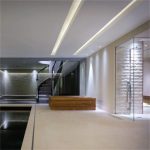 Ceiling LED Strip Lights
Ceiling LED Strip Lights Cuttable LED Light Strips
Cuttable LED Light Strips Garage LED Lighting Strips
Garage LED Lighting Strips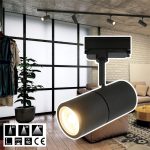 Modern Track Lighting
Modern Track Lighting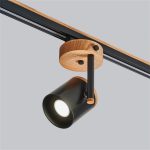 Ceiling Track Lighting
Ceiling Track Lighting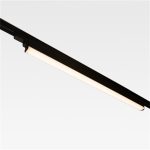 LED Linear Track Lighting
LED Linear Track Lighting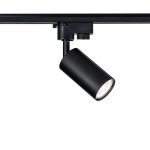 Black Track Lighting
Black Track Lighting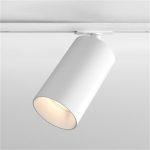 White Track Lighting
White Track Lighting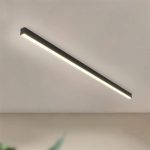 Linear Ceiling Light
Linear Ceiling Light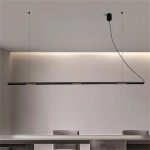 Modern Linear Lighting
Modern Linear Lighting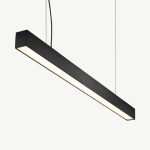 Black Linear Lighting
Black Linear Lighting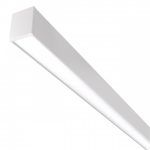 White Linear Lighting
White Linear Lighting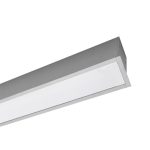 Recessed Linear Light
Recessed Linear Light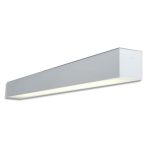 Surface Mounted LED Linear Lights
Surface Mounted LED Linear Lights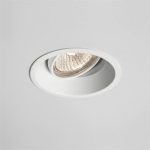 Recessed Spotlights
Recessed Spotlights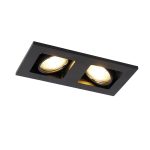 Black Spotlight
Black Spotlight White Spotlights
White Spotlights LED Panel Light 600×600
LED Panel Light 600×600 Kitchen Downlighting
Kitchen Downlighting Commercial Downlights
Commercial Downlights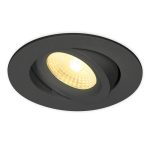 Black Downlights
Black Downlights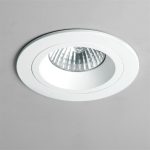 White Downlights
White Downlights![Interior designer Statistics in the UK[2023 stats] -Article-All you need to know-DALL·E 2024 01 27 14.48.37 A large, eye catching photo designed for a report cover or a presentation slide. The theme is 'Interior Designers Stats UK'. The main focus is a very](https://www.kosoom.uk/wp-content/uploads/2024/01/DALL·E-2024-01-27-14.48.37-A-large-eye-catching-photo-designed-for-a-report-cover-or-a-presentation-slide.-The-theme-is-Interior-Designers-Stats-UK.-The-main-focus-is-a-very-.jpg)
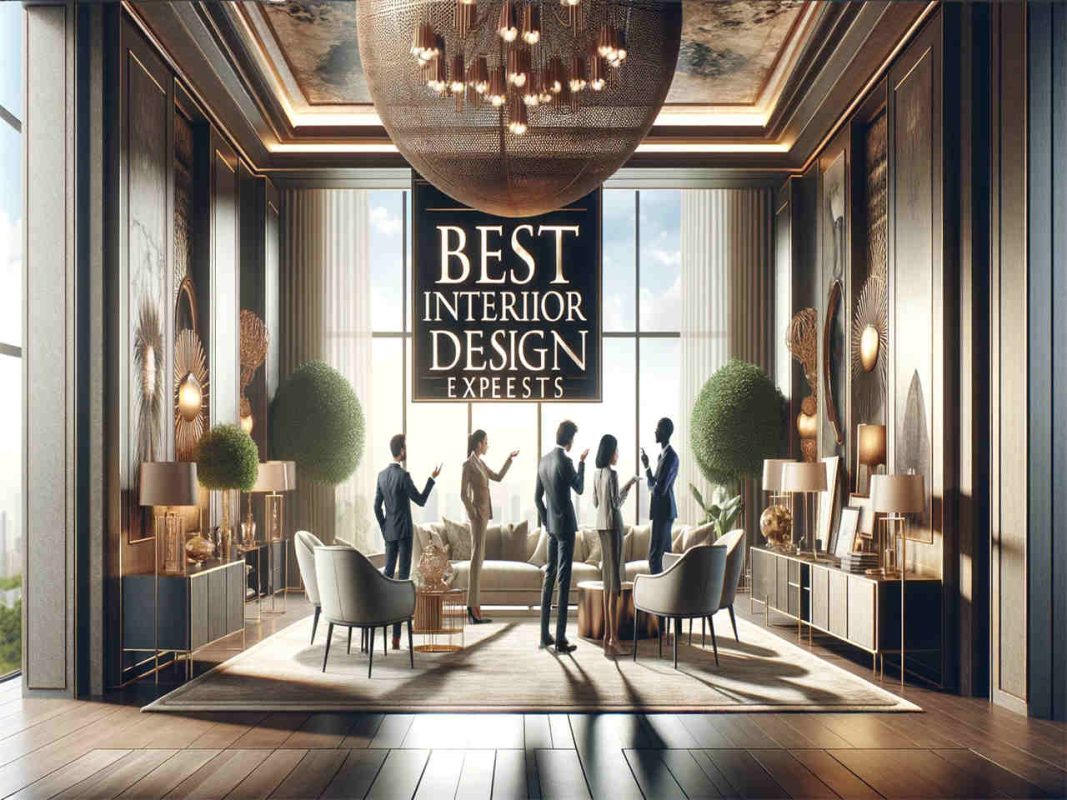
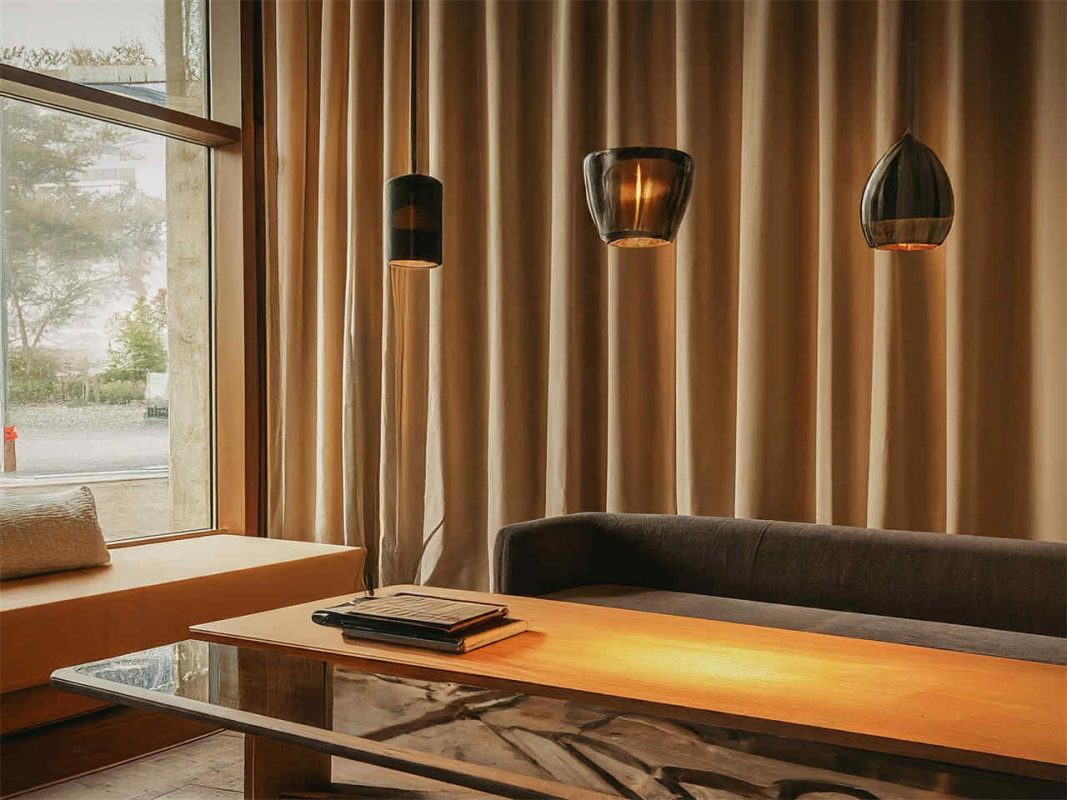
![Electricians Statistics in the UK[2023 stats]-Article-All you need to know-DALL·~1](https://www.kosoom.uk/wp-content/uploads/2024/01/DALL·1-1-1067x800.jpg)

